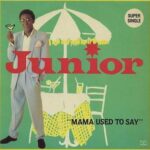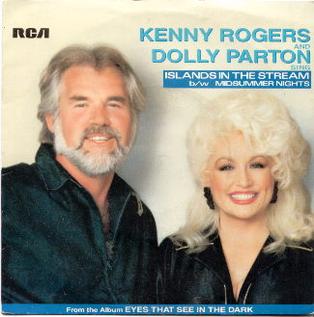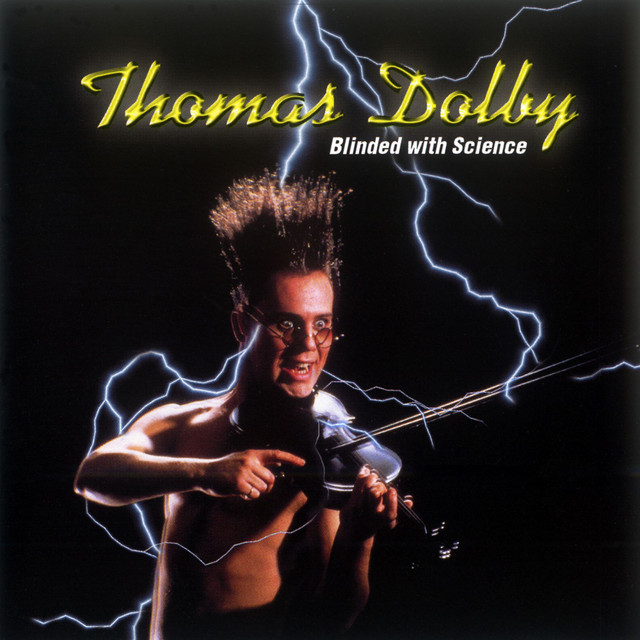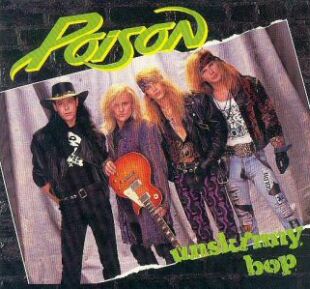 Junior’s “Mama Used to Say” is a song that perfectly encapsulates the vibrancy and infectious optimism of early 1980s dance music, standing as both a snapshot of its era and a timeless anthem for generations who have embraced its rhythm. Released in 1982, the track is emblematic of Junior Giscombe’s ability to fuse catchy pop melodies with elements of funk, R&B, and post-disco grooves, creating a sound that feels both immediate and enduring. Its infectious beat, memorable chorus, and universal message make it a song that resonates far beyond the dance floors where it first gained traction, reaching listeners with its charm, energy, and subtle wisdom. The song isn’t just about music—it’s about life lessons wrapped in rhythm, a playful yet profound reminder of the guidance passed from one generation to the next. Its enduring appeal lies not only in its sound but in its thematic resonance, offering both a joyful experience and a subtle reflection on growing up.
Junior’s “Mama Used to Say” is a song that perfectly encapsulates the vibrancy and infectious optimism of early 1980s dance music, standing as both a snapshot of its era and a timeless anthem for generations who have embraced its rhythm. Released in 1982, the track is emblematic of Junior Giscombe’s ability to fuse catchy pop melodies with elements of funk, R&B, and post-disco grooves, creating a sound that feels both immediate and enduring. Its infectious beat, memorable chorus, and universal message make it a song that resonates far beyond the dance floors where it first gained traction, reaching listeners with its charm, energy, and subtle wisdom. The song isn’t just about music—it’s about life lessons wrapped in rhythm, a playful yet profound reminder of the guidance passed from one generation to the next. Its enduring appeal lies not only in its sound but in its thematic resonance, offering both a joyful experience and a subtle reflection on growing up.
From the opening notes, “Mama Used to Say” establishes a sense of movement and vitality that is impossible to resist. The crisp rhythm, layered percussion, and buoyant bass line immediately draw listeners in, creating a groove that compels physical engagement. Junior’s voice enters with warmth, charisma, and a distinctively smooth tone that conveys both authority and charm, making the lyrics feel personal yet universally relatable. The track expertly balances the energy of a dance hit with the sincerity of its message, blending fun and wisdom in a way that few songs achieve. Each beat, each accent, and each melodic phrase work together to establish an atmosphere of joy and inclusivity, inviting listeners to participate in a musical conversation that spans generations.
Lyrically, the song revolves around the idea of life lessons imparted by parental figures, with the chorus—“Mama used to say, only fools rush in”—serving as both a memorable hook and a thematic anchor. These lines, simple on the surface, carry a weight of meaning that extends beyond the immediacy of the dance floor. They remind listeners of the advice that shapes our decisions, the cautionary wisdom passed down through families, and the subtle guidance that influences personal growth. While many dance tracks of the era focused primarily on physical movement or romantic escapades, Junior’s song stands out for weaving thoughtful commentary into an infectious rhythm. The lyrics are accessible, memorable, and deeply resonant, allowing listeners to internalize the song’s message even as they move to its beat.
Musically, “Mama Used to Say” is a masterclass in early 1980s dance production. Its foundation lies in a driving rhythm section that seamlessly blends drum machines, live percussion, and syncopated bass lines, creating a groove that is at once propulsive and smooth. Layered keyboards add harmonic richness, while subtle guitar and brass accents provide texture and excitement without overwhelming the central melody. This careful orchestration allows Junior’s vocals to remain front and center, highlighting the song’s lyrical content while ensuring that the track maintains a strong sense of forward momentum. The production is polished but never sterile; every element is calibrated to maximize engagement, making the song both a product of its time and an enduring piece of musical craftsmanship.
Junior’s vocal performance is a critical element in the track’s success. His delivery combines clarity, warmth, and subtle expressiveness, allowing him to navigate the song’s dual roles as dance anthem and life lesson with equal skill. The phrasing, timing, and inflection of his voice imbue the lyrics with personality and nuance, turning lines that might otherwise read as simple advice into moments of connection and reflection. The chorus, with its sing-along quality and memorable repetition, encourages audience participation, while the verses reveal a careful attention to storytelling and emotional cadence. This vocal approach bridges the gap between entertainment and introspection, making “Mama Used to Say” more than a fleeting hit—it is a track that resonates on both a musical and thematic level.
The song’s production also reflects the broader trends of early 1980s music, when post-disco dance sounds were evolving to incorporate more intricate arrangements and electronic elements. “Mama Used to Say” embraces these trends while maintaining a sense of organic warmth, balancing programmed elements with live instrumentation and human expressiveness. This balance is part of what gives the track its timeless appeal: it feels authentically rooted in its era while remaining fresh and engaging decades later. The interplay of rhythm, harmony, and melody demonstrates a keen understanding of musical dynamics, creating a song that is both immediately catchy and satisfying upon repeated listening.
Junior’s ability to convey authenticity and personality through the song is also notable. Unlike some of the more manufactured dance hits of the era, “Mama Used to Say” feels personal, as if the artist is speaking directly to the listener. The advice-laden lyrics, combined with the warm and charismatic vocal performance, create a sense of intimacy and trust. This connection enhances the song’s impact, as listeners are drawn into the narrative and invited to reflect on the wisdom contained within the playful phrasing. It is a song that manages to be both accessible and meaningful, a combination that contributes to its lasting relevance.
Danceability is, of course, a core strength of “Mama Used to Say.” The song’s groove is infectious, encouraging movement from the very first beat. The rhythm section is carefully constructed to maintain momentum while providing space for melodic and harmonic variation, allowing the track to sustain interest over its duration. The percussion is crisp and energetic, driving the song forward without ever overwhelming the vocals or other musical elements. The bass line is memorable and fluid, anchoring the track while adding a layer of sophistication to the rhythmic foundation. These elements combine to make the song a staple of dance floors and radio playlists alike, a track that can energize a crowd while retaining its musical integrity.
The arrangement of the track is also carefully calibrated to highlight key moments. The chorus functions as a high point, offering both melodic resolution and lyrical emphasis. Instrumental breaks provide space for listeners to absorb the rhythm and reflect on the lyrics, while subtle variations in harmony and texture keep the song dynamic and engaging. This attention to pacing and structure ensures that “Mama Used to Say” maintains a sense of momentum and excitement throughout, preventing listener fatigue and enhancing its replay value. The song’s design demonstrates a sophisticated understanding of musical flow, ensuring that each moment contributes to the overall impact.
Culturally, “Mama Used to Say” occupies a unique space as a danceable track with a message. While many contemporary songs focused solely on romantic themes or the mechanics of partying, Junior incorporated life wisdom and reflection into his composition. The result is a song that resonates across age groups: teenagers could enjoy it for its energy and danceability, while adults could appreciate the nostalgic and didactic undertones. This dual appeal has contributed to the song’s longevity, allowing it to remain relevant and widely appreciated even as musical trends have evolved. It is both a historical artifact and a living piece of culture, bridging the past and present in a single infectious package.
The song’s legacy is reflected in its influence on subsequent artists and the enduring popularity it enjoys in popular media. “Mama Used to Say” has been sampled, covered, and referenced by numerous performers, demonstrating its versatility and lasting impact. Its combination of catchy melody, rhythmic drive, and meaningful lyrics has served as a blueprint for artists seeking to create music that is both engaging and resonant. The track has appeared in film, television, and advertising, further cementing its place in popular culture and introducing it to new generations of listeners who may not have experienced its initial release.
Junior’s “Mama Used to Say” also stands as a testament to the power of brevity and clarity in songwriting. The song is concise, focused, and unpretentious, yet it accomplishes a remarkable amount within its short duration. Each verse, chorus, and instrumental interlude serves a purpose, contributing to the overall energy, narrative, and emotional impact. There is no excess, no unnecessary ornamentation; instead, every element is deliberate, enhancing the song’s effectiveness. This economy of design is part of why the track continues to resonate, as it demonstrates that powerful musical statements can be made without complexity or excess.
One of the most remarkable aspects of “Mama Used to Say” is its ability to convey universal truths in a playful and accessible manner. The titular advice—drawn from parental guidance—speaks to the ways in which family, tradition, and experience shape our lives. The song captures the tension between youthful impatience and the wisdom of experience, presenting it in a manner that is both entertaining and thought-provoking. This thematic depth, combined with the song’s infectious rhythm, ensures that it remains relevant and meaningful across generations, offering both a fun listening experience and a subtle invitation to reflect on one’s own life choices.
The song’s infectious nature is amplified by its production techniques, which balance clarity, warmth, and rhythmic drive. The use of layered instrumentation, precise percussion, and melodic embellishments ensures that each element is discernible while contributing to the song’s cohesive energy. Junior’s vocal performance is framed perfectly within this arrangement, allowing his voice to shine without being overshadowed by the instrumentation. The production maintains a sense of intimacy and immediacy, making listeners feel as though they are participating in the performance rather than simply observing it. This immersive quality enhances the song’s appeal and underscores its enduring influence.
Junior’s artistry extends beyond mere performance; his ability to integrate message, melody, and rhythm showcases his skills as a songwriter and musician. The lyrics, though simple, are carefully crafted to resonate emotionally while fitting seamlessly within the song’s rhythmic framework. The melodic lines are memorable and singable, ensuring that the track remains lodged in the listener’s mind long after it has ended. The interplay between vocals and instrumentation is precise yet natural, creating a sense of spontaneity that complements the track’s lively energy. This combination of craftsmanship and personality is what allows “Mama Used to Say” to endure as both a hit record and a cultural touchstone.
Dance floors have long celebrated “Mama Used to Say” for its infectious groove and high-energy performance. DJs, radio stations, and live performers continue to embrace the track for its ability to energize crowds and inspire movement. Its rhythm is compelling, its melody is memorable, and its lyrical content is engaging, making it a perennial favorite in social settings where music and movement intersect. The song’s ability to motivate physical response while delivering a message of wisdom and reflection is a rare quality that elevates it above typical dance hits, ensuring that it continues to hold a special place in the hearts of listeners and performers alike.
The timeless appeal of “Mama Used to Say” is also evident in its continued relevance in contemporary culture. Despite being rooted in the early 1980s, the track’s themes, energy, and musicality resonate with modern audiences. Its message of patience, reflection, and respect for experience remains relevant, while its infectious rhythm ensures that it continues to captivate new listeners. The combination of nostalgia and universal appeal allows the song to function as both a historical artifact and a living, evolving piece of music, bridging generations and musical tastes with ease and charm.
Junior’s “Mama Used to Say” exemplifies the enduring power of music to entertain, inspire, and connect listeners across time. Its infectious rhythm, memorable melody, and thoughtful lyrics create a track that is simultaneously fun and meaningful, a combination that few songs manage to achieve. The performance, production, and arrangement all contribute to a sense of immediacy and joy, making the song as compelling today as it was upon its initial release. Its ability to blend danceability with thematic depth, simplicity with sophistication, and energy with introspection ensures that it remains a standout track in the history of popular music.
Ultimately, the legacy of “Mama Used to Say” lies in its ability to resonate across generations. Junior crafted a song that is simultaneously lighthearted and profound, playful and wise, immediate and timeless. Its infectious energy, memorable hooks, and universal themes ensure that it continues to be celebrated, covered, and cherished by musicians and listeners alike. The track stands as a testament to the enduring appeal of music that balances entertainment with reflection, demonstrating that a song can be both a joyous dance anthem and a vehicle for meaningful storytelling. Junior’s “Mama Used to Say” remains a shining example of the power of popular music to connect, inspire, and endure, a timeless classic whose lessons, energy, and charm will continue to resonate for decades to come.


